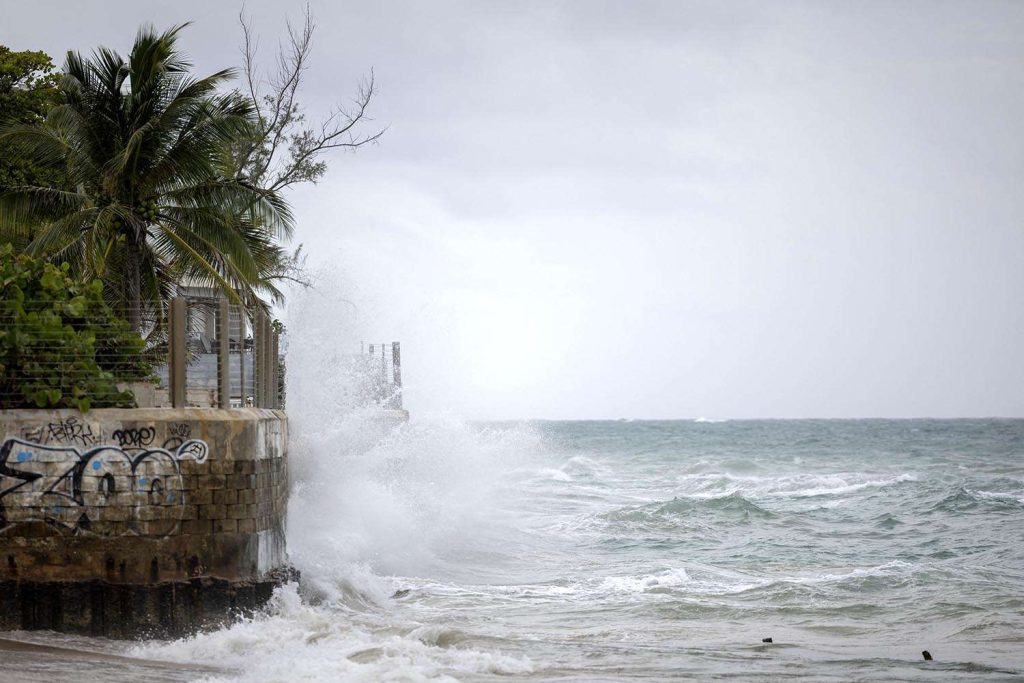:max_bytes(150000):strip_icc():format(jpeg)/Hurricane-Erin-Puerto-Rico-081725-3554c7c448d34423894d976987e99af3.jpg)
NEED TO KNOW
- On Sunday, Aug. 17, Hurricane Erin was downgraded to a Category 3 storm after previously reaching a catastrophic Category 5 status
- According to the National Hurricane Center, the hurricane is still expected to produce “life-threatening” conditions in several areas
- Tropical storm conditions are expected in the Turks and Caicos Islands and Puerto Rico before possibly reaching in the Southeast Bahamas tonight
Hurricane Erin remains a threat to life despite no longer being a Category 5 storm.
Early morning on Sunday, Aug. 17, the National Hurricane Center downgraded Hurricane Erin as wind speeds eased, according to Reuters and NPR. The tropical storm is still expected to bring poor weather conditions to several locations.
The National Oceanic and Atmospheric Administration (NOAA) said in an updated report that heavy rainfall will continue throughout Puerto Rico, while diminishing over the Virgin Islands today. This will pose a risk of flash flooding and landslides, or mudslides.
The Turks and Caicos Islands are also likely to be hit before the tropical storm moves through the Bahamas from Sunday evening through Tuesday, Aug. 19.
“Erin is expected to produce life-threatening surf and rip currents along the beaches of the Bahamas, much of the East Coast of the U.S., Bermuda, and Atlantic Canada during the next several days,” according to the report.
NOAA via Getty
The storm’s rapid intensification makes it “one of the fastest-strengthening Atlantic hurricanes on record, and potentially the fastest intensification rate for any storm earlier than September 1,” CNN reported.
The level of intensification typically happens in September and October, according to the outlet. Rapid intensification is when a hurricane gains at least 35 mph of sustained winds in 24 hours, per NOAA.
Erin began as a tropical storm that swept through the Cape Verde Islands on Tuesday, Aug. 12. The heavy rainfall and flooding “overwhelmed emergency services and cut key roads” in the island located off of West Africa, resulting in nine deaths and 1500 displaced, Reuters reported.
The National Hurricane Center warned that the storm was expected to strengthen as it passed over warm Caribbean waters, according to NPR.
By Friday, Aug. 15, the storm had strengthened into a hurricane.
This storm comes nearly eight years after Hurricane Maria ravaged Puerto Rico as a category 4 storm, killing more than 3,000 people and causing an estimated $90 billion in damages.
Courtesy of Kenny Chesney
Maria struck on Sept. 20, 2017, and quickly became the first hurricane of its strength to hit the island since 1932. Torrential downpour and violent winds ravaged the electrical grid and sent thousands fleeing to the mainland.
Months later, businesses struggled to recover, and residents had difficulty obtaining basic necessities. The Federal Emergency Management Agency (FEMA) was heavily criticized after failures resulted in only half of the island able to access clean drinking water, among other essentials.
Ramón A. Paez Marte, of Canóvanas, told NBC News in 2018 that at least seven people he knew died in the hurricane’s aftermath, including a man in his 30s, who had been rescuing stranded elderly residents.
“He didn’t even last one month,” Paez Marte said of the young man. “He had a wound and when he dove into the flood waters trying to help people, I guess it caught a really bad infection and they couldn’t cure it.”
According to findings from The New York Times, more than one million people requested help from the agency — and 58 percent were denied.
“We all have some sort of [post-traumatic stress disorder]. It’s a trauma,” San Juan Mayor Carmen Yulín Cruz Soto told ABC News in 2018. “It’s not a shock, it’s a trauma.”
Never miss a story — sign up for PEOPLE’s free daily newsletter to stay up-to-date on the best of what PEOPLE has to offer, from celebrity news to compelling human-interest stories.
In February of 2018, the Senate reached a two-year budget deal that awarded Puerto Rico almost $16 billion in aid. However, the number falls short of the $94.4 billion figure that officials said they needed to rebuild the island and prevent future devastation, per The New York Times.
Years later, in 2022, Hurricane Fiona also made landfall in Puerto Rico, bringing “catastrophic and life-threatening flooding” as the slow-moving Category 1 storm dumped trillions of gallons of water on the island.

